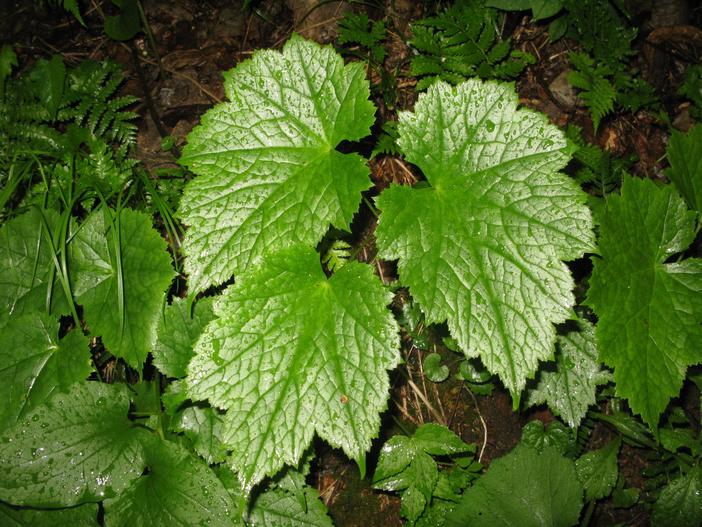Japanese Bugbane
(Actaea japonica)
Japanese Bugbane (Actaea japonica)
/
/

Qwert1234
CC BY-SA 3.0
Image By:
Qwert1234
Recorded By:
Copyright:
CC BY-SA 3.0
Copyright Notice:
Photo by: Qwert1234 | License Type: CC BY-SA 3.0 | License URL: https://creativecommons.org/licenses/by-sa/3.0 | Uploader: Qwert1234 | Publisher: Wikipedia Commons










Estimated Native Range
Summary
Actaea japonica, commonly known as Japanese bugbane, is a perennial herb native to moist, shaded forest floors and stream banks in central and southern China, Jeju Island in South Korea, and central and Japan. It typically grows to a height of 1.5 to 2.5 feet (45 to 75 cm) with a similar spread. Japanese bugbane has compound leaves that are deeply divided, giving it a fine-textured appearance. The plant produces slender, bottlebrush-like spikes of tiny, creamy white flowers that bloom in late summer to early fall. These flowers are mildly fragrant and are considered quite showy, attracting pollinators such as bees and butterflies.
Japanese bugbane is valued for its shade tolerance and is often used in woodland gardens, shaded borders, and naturalized areas. It is also appreciated for its late-season blooms when few other plants are flowering. In cultivation, it requires consistently moist soil and thrives in part to full shade. While it is generally low-maintenance, it can be susceptible to leaf spot and powdery mildew. To maintain plant health, provide good air circulation and avoid overhead watering. Actaea japonica is not known for aggressive roots or invasiveness, making it a safe choice for gardeners who wish to avoid plants that spread uncontrollably.CC BY-SA 4.0
Japanese bugbane is valued for its shade tolerance and is often used in woodland gardens, shaded borders, and naturalized areas. It is also appreciated for its late-season blooms when few other plants are flowering. In cultivation, it requires consistently moist soil and thrives in part to full shade. While it is generally low-maintenance, it can be susceptible to leaf spot and powdery mildew. To maintain plant health, provide good air circulation and avoid overhead watering. Actaea japonica is not known for aggressive roots or invasiveness, making it a safe choice for gardeners who wish to avoid plants that spread uncontrollably.CC BY-SA 4.0
Plant Description
- Plant Type: Herb
- Height: 1.5-2.5 feet
- Width: 1.5-2.5 feet
- Growth Rate: Moderate
- Flower Color: White
- Flowering Season: Summer
- Leaf Retention: Deciduous
Growth Requirements
- Sun: Part Shade
- Water: Medium
- Drainage: Medium
Common Uses
Bee Garden, Bird Garden, Border Plant, Butterfly Garden, Deer Resistant, Low Maintenance
Natural Habitat
native to moist, shaded forest floors and stream banks in central and southern China, Jeju Island in South Korea, and central and Japan
Other Names
Common Names: Japanese Baneberry, Japanese Bugbane
Scientific Names: , Actaea japonica, Actaea acerina, Actaea japonica var. ternata, Cimicifuga acerina, Cimicifuga acerina, Cimicifuga acerina f. hispidula, Cimicifuga acerina var. intermedia, Cimicifuga acerina var. macrophylla, Cimicifuga acerina var. peltata
GBIF Accepted Name: